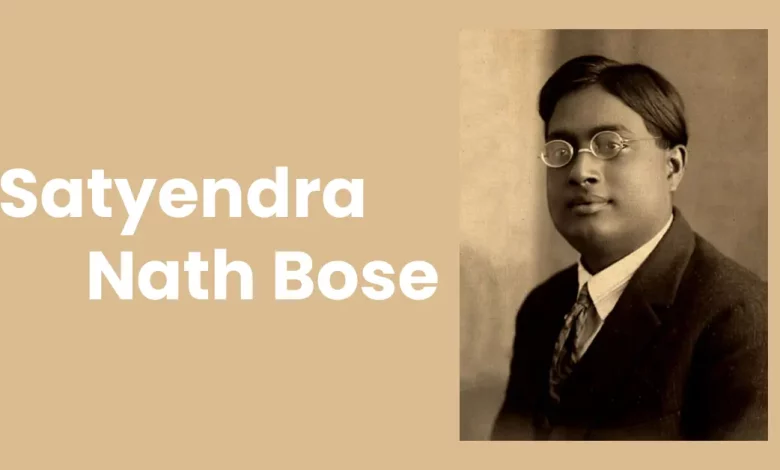Daily Current Affairs for UPSC
Contribution of Satyendra Nath Bose
Syllabus- Science & Technology [GS Paper-3]

Context- The year 2024 marks 100 years of Bose’s discovery of the correct set of equations to use to work out the behaviour of collections of photons.
Satyendra Nath Bose
- Satyendra Nath Bose (1894-1974) was one of India’s most eminent scientists.
- He was a famed Indian physicist whose fundamental contribution to quantum mechanics, referred to as Bose-Einstein records, revolutionized our understanding of the subatomic global.
Breakthrough Contribution
- Inspired by Albert Einstein’s work on mild quanta, Bose sent Einstein a paper titled “Planck’s Law and the Hypothesis of Light Quanta.”
- This paper, based on novel statistical concepts, aimed to explain the distribution of radiation energy.
- Planck’s law, named after Max Planck, describes the pattern that physics worked differently in the microscopic and all hot objects — from a bowl of hot soup to the Sun — emit radiation in a range of frequencies
- This paper, based on novel statistical concepts, aimed to explain the distribution of radiation energy.
Bose-Einstein Statistics
-
- Einstein generalised Bose’s works (on photons), prolonged it on atoms, and gave the idea of ideal quantum gas (Bose gas). This fashioned the idea of the Bose-Einstein data and Bose-Einstein condensates.
- Bose was given the opportunity to work in European laboratories for 2 years along with scientists like Marie Curie and Albert Einstein because of this reputation.
- The new form of conceptual originality in Bose’s works was that the particles had appeared as indistinguishable, a thorough departure from the idea that underlies the classical Maxwell-Boltzmann statistics (the statistics of “distinguishable” classical particles).
- Bosons:
-
- It was soon realised that the new Bose-Einstein statistics were applicable simplest to particles with integer spins that do not comply with the Pauli exclusion principle.
- The debris with integer spins are now known as bosons (as advised by Dirac).
- On the other hand, Fermi-Dirac statistics are relevant to particles with half-of-integer spins (referred to as fermions), gratifying Pauli’s exclusion principle.
Legacy
- Together with Meghanand Saha he published the primary English translation of Einstein’s papers on trendy relativity.
- Bose-Einstein condensates: Laid the inspiration for Bose-Einstein condensates (BECs), a crucial concept in physics with diverse applications.
- Applications of BECs: Range from Statistics superconductivity and superfluidity to developing extremely-precise atomic clocks and exploring quantum computing opportunities.
- Quantum theory: Bose’s work not handiest contributed significantly to quantum principle but also paved the way for further improvements in diverse scientific fields.
- Higgs boson: Though not officially acknowledged, his contribution to the invention of the Higgs boson, later awarded the Nobel Prize, highlights the significance of his pioneering work.
- Awards: His willenergy to analyze and medical integrity earned him several accolades, consisting of the Padma Vibhushan and the Fellowship of the Royal Society.
Beyond Physics
- Bose’s highbrow pursuits prolonged beyond physics. He actively participated in promoting Bengali literature and scientific education in India.
- He translated scientific papers into Bengali and contributed to the development of technological science textbooks in his native language.
Source: The Hindu
UPSC Mains Practice Question:
Q. Discuss the work of ‘Bose-Einstein Statistics’ done by Prof. Satyendra Nath Bose and show how it revolutionized the field of physics. (2018)





.png)



